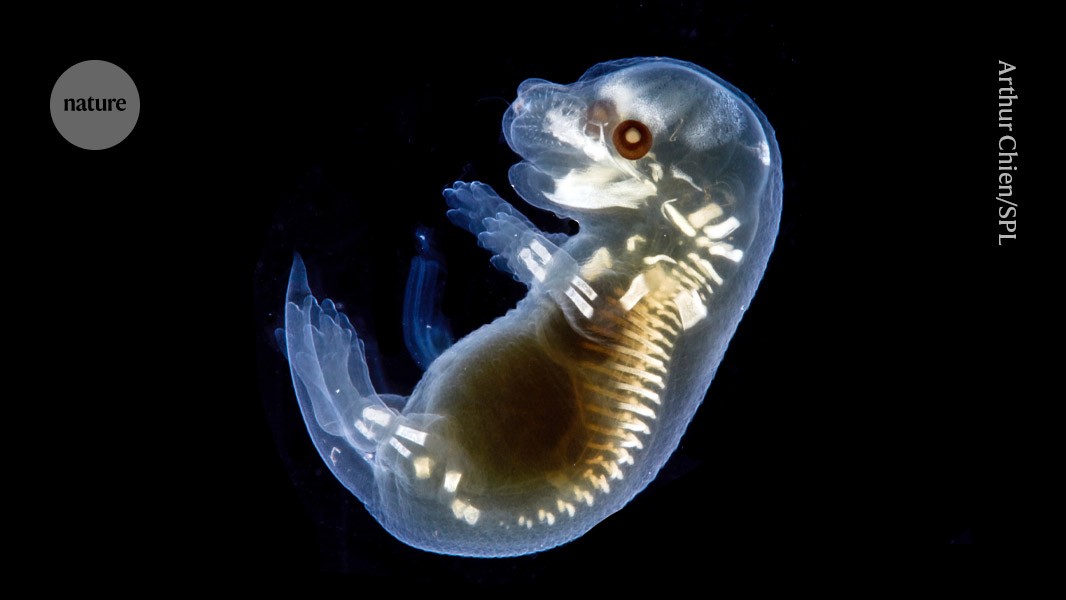
Light micrograph of a mouse embryo. Scientists are developing mice with human cells.Credit: Arthur Chien/Science Photo Library
Researchers have developed mice with organs containing human cells, using a convenient and surprising approach — injecting the cells directly into the amniotic fluid of pregnant mice. The method resulted in baby mice with a sprinkling of human cells in their intestines, liver and brain. But researchers say that, for the technique to be useful, more work needs to be done to increase the proportion of human cells that grow in the organs.
Human–animal chimaeras are an exciting yet challenging area of research. Human cells are coaxed to grow in animal embryos, allowing researchers to study human tissue development. But the long-term goal of the work is to grow human organs that can be harvested for transplantation.
The latest technique, presented at the International Society for Stem Cell Research meeting in Hong Kong on 12 June, could be “game changing” for the field, says Hideki Masaki, a stem-cell scientist at the Institute of Science Tokyo, who attended the session. The data have not yet been peer reviewed.
To create chimaeras, researchers typically introduce human stem cells into embryos of another species, often pigs or mice, growing in a dish. But one of the challenges with this technique is that not many human cells survive, and those that do, do not endure for long. And the injected cells are pluripotent, meaning that they could theoretically develop into any cell type in the body — a process that researchers have to find ways of controlling.
Xiling Shen, a biomedical engineer at the University of Texas MD Anderson Cancer Center in Houston, wanted to look for ways of improving these techniques to ensure that more human cells survive the procedure, and that they target specific organs. He and Qiang Huang, a developmental biologist at the Terasaki Institute for Biomedical Innovation in Los Angeles, California, and their colleagues thought that the human cells might be more resilient if they were allowed to mature into 3D human-tissue models, known as organoids, before injection.
‘Crazy’ experiment
The team used reprogrammed stem cells to grow human organoids of the gut, liver and brain in a dish. Shen says the researchers then injected the organoids into the amniotic fluid of female mice carrying early-stage embryos. “We didn’t even break the embryonic wall” to introduce the cells to the embryos, says Shen. The female mice carried the embryos to term.
“It’s a crazy experiment; I didn’t expect anything,” says Shen.
Within days of being injected into the mouse amniotic fluid, the human cells begin to infiltrate the growing embryos and multiply, but only in the organ they belonged to: gut organoids in the intestines; liver organoids in the liver; and cerebral organoids in the cortex region of the brain. One month after the mouse pups were born, the researchers found that roughly 10% of them contained human cells in their intestines — making up about 1% of intestinal cells. “You get sections of the intestine that originate from injected human organoids,” says Shen. The proportion of human cells was lower in the liver and brain. Overall, success rates were low, says Shen, who is seeking ways to boost them.
The human cells seemed to be functioning. For example, the human liver cells produced human albumin, a common liver protein. And the cells were still present two months after birth, says Shen. “These cells are pretty stable.”


